자유게시판
[수정] Alexandra Navrotsky 교수 초청 강연 공고
Alexandra Navrotsky 교수 초청 강연 공고
---------------------------------------------------------
서울대학교 공과대학 재료공학부에서 11월 3일부터 약 2주간
열역학 분야의 세계적 대가인 Alexandra Navrotsky 교수 특별 초청 강연을 주최합니다.
<Alexandra Navrotsky 교수 약력>
-Director, NEAT ORU
-Edward Roessler Chair in Mathematical and Physical Sciences
-Distinguished Professor of Ceramics, Earth, and Environmental Materials Chemistry
-Thermochemistry Facility and NEAT ORU
University of California at Davis
<세부 내용 및 일정>
1. 열역학 특강 (Crash Course on Thermodynamics)
-일자: 11월 3일(월), 5일(수), 10일(월), 12일(수) 12:30-14:30
-장소: 39동 B103호 BK 다목적 회의실
-대상: 학부생 및 대학원생. 선착순 80-100명
E-mail (crazyps7@snu.ac.kr) 신청부탁드립니다.
이름. 소속(학과 혹은 실험실). 연락처 (e-mail, 핸드폰)
-강의내용 (강의노트 나눠드립니다.)
<1> Introduction
“What is unique about materials thermodynamics, why is the subject useful, and some examples of applications”
<2> Fundamentals of thermodynamics- review of basic principles
<3> Composition as a variable - partial molar quantities and activities
<4> Solid solutions and alloys - the regular solution and related formalism
<5> Immiscibility and phase separation
<6> Sublattices, order-disorder, and more complex systems
<7> Phase transitions
<8> Phase diagrams
<9> Thermochemistry of Nanomaterials
<10> Some examples and conclusions
2. 여학생과의 만남 (Special talk with a leading female scientist)
-일자: 11월 6일(목) 17:30-18:30
-장소: 39동 B103호 BK 다목적 회의실
-대상: 여학생 only
3. 나노소재의 열역학 특별 세미나 (Special seminar on nanomaterials)
-일자: 11월 7일(금) 14:30-16:00
-장소: 43-1동 201호
-대상: 학부생 및 대학원생
-내용
Abstract
Extensive calorimetric studies of oxide nanoparticles over the past several years in our laboratory have established systematic trends in energetics at the nanoscale. There is a competition among polymorpism, surface energies and hydration that leads to crossover in phase stability at the nanoscale. Metastable polymorphs have lower surface energies than stable ones. Oxyhydroxides have lower surface energies than anhydrous oxides. Hydration stabilizes the surface. These trends are illustrated with data for aluminum oxides, iron oxides, titania, and zinc oxide. For ZnO, nanoneedles are shown to have the highest surface energy, nanorods intermediate, and nanoparticles the smallest. A comparison, based on very recent calorimetric data, of surface and interfacial energies for yttria stabilized zirconia, is presented.
공과대학, 농생과학대학 및 자연과학대학 학생 여러분의 많은 참여 부탁드립니다.
문의처: 고체이온공학연구실 880-7166

